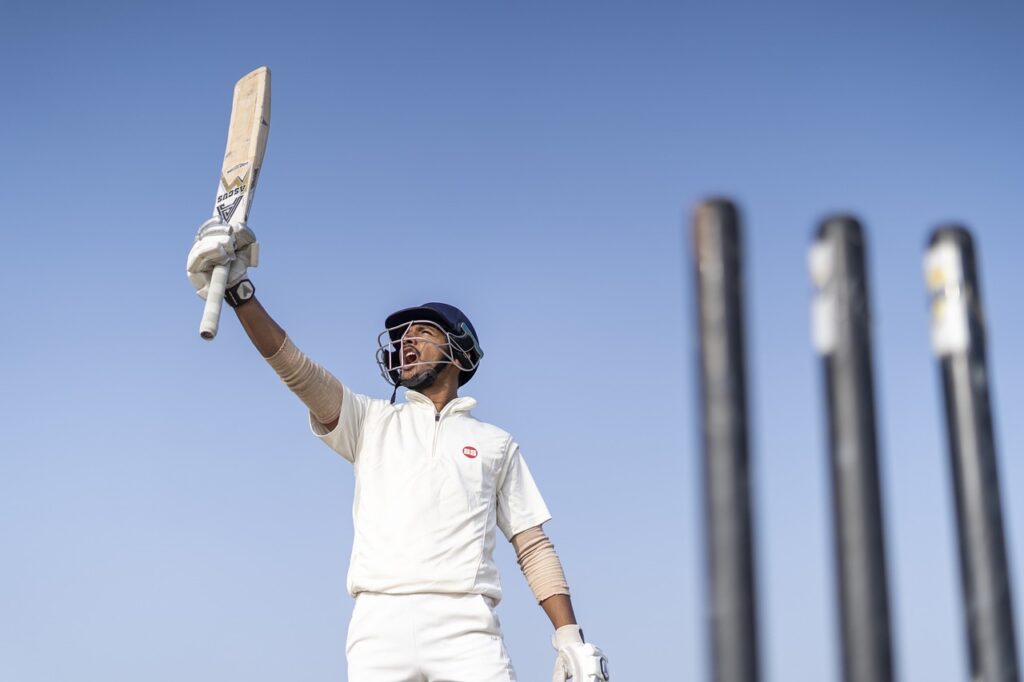
Cricket, one of the world’s most popular sports, has a rich history that spans several centuries. From its humble beginnings in medieval England to becoming an international phenomenon, the game has evolved significantly. This article explores the origins of cricket, its early development, and how it transformed into the global sport it is today.
Early Beginnings: The Birth of Cricket
The exact origins of cricket remain uncertain, but historians believe that it was first played in England as early as the 13th century. The game likely evolved from children’s pastimes, where they hit a ball with a stick or club.
The earliest known reference to cricket dates back to 1598 when a court case in Surrey, England, mentioned “creckett” being played by schoolboys in the 1550s. This suggests that cricket was already well established by the mid-16th century.
Some theories suggest that cricket was first played by shepherds in southeast England, who used their crooks (curved sticks) to hit a ball made of wool or rags. Over time, this informal game developed into a structured sport.
Cricket in the 17th and 18th Centuries
By the 1600s, cricket had gained popularity among adults, and organized matches began taking place. The first recorded match occurred in 1611 in Sussex, England. Around the same time, the word “cricket” was defined in a dictionary as a boys’ game.
During the 18th century, cricket became increasingly popular, especially among the English aristocracy. Nobles and landowners formed teams, and the game started to be played for high stakes. The patronage of wealthy individuals led to the development of professional players who were paid to participate in matches.
The Hambledon Club, established in the 1760s in Hampshire, played a crucial role in shaping cricket’s early rules and techniques. However, it was the formation of Marylebone Cricket Club (MCC) in 1787 that truly revolutionized the sport. MCC became the custodian of the game’s laws, many of which still influence modern cricket.
The Growth of Cricket in the 19th Century
The 19th century saw cricket expand beyond England. British colonial influence played a significant role in spreading the game to various parts of the world, including India, Australia, South Africa, and the Caribbean.
Cricket in India: Introduced by British merchants and soldiers, cricket became popular among Indian elites. The first recorded cricket match in India was played in 1721. By the late 19th century, native teams started forming, leading to the development of Indian cricket.
Cricket in Australia: The first recorded match in Australia took place in 1803. The sport quickly grew, and in 1877, the first-ever Test match was played between England and Australia in Melbourne.
Cricket in South Africa and the West Indies: Cricket was introduced by British settlers, and by the late 19th century, these regions had developed strong cricketing traditions.
The invention of round-arm and over-arm bowling in the 19th century changed the game significantly. These new styles made batting more challenging and led to further refinements in cricket rules.
The Rise of International Cricket in the 20th Century
The early 1900s marked the formalization of international cricket. The Imperial Cricket Conference (now the International Cricket Council – ICC) was founded in 1909, bringing England, Australia, and South Africa together as the first members.
Test Cricket became the primary format, with teams from different countries competing in multi-day matches.
The 1970s saw the rise of One Day Internationals (ODIs), revolutionizing the game with a limited-overs format that appealed to a broader audience.
The introduction of World Cups (first held in 1975) brought cricket to a truly global stage.
The late 20th century witnessed the emergence of day-night matches, colored clothing, and white-ball cricket, making the sport more dynamic.
The 21st Century: The T20 Era and Global Expansion
The 21st century has seen cricket evolve even further, with the introduction of T20 cricket in 2003. This shorter format, lasting about three hours, has brought a new level of excitement and entertainment to the sport.
The Indian Premier League (IPL), launched in 2008, became one of the most successful sports leagues globally, attracting top players from different countries.
Cricket has expanded to non-traditional regions, with countries like Afghanistan, Ireland, and the United States gaining international recognition.
The ICC has introduced global tournaments like the T20 World Cup and the World Test Championship, keeping the sport competitive and engaging.
Conclusion
Cricket’s journey from a simple children’s game in medieval England to a multi-billion-dollar global sport is remarkable. The game’s evolution, influenced by historical events, technological advancements, and changing audience preferences, has ensured its continued growth and popularity.

